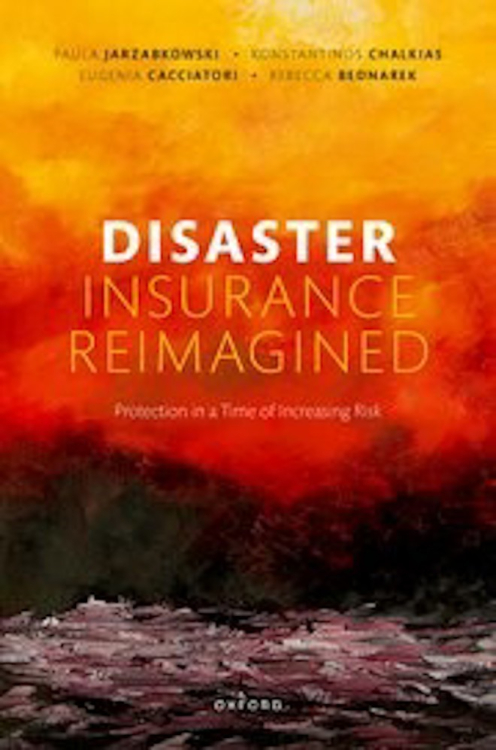Disaster insurance reimagined – an interview with co-author Paula Jarzabkowski

A new book focuses on the vital role of disaster insurance schemes around the world, and ways to address the challenges they face amid shifting risk environment, particularly for emerging threats such as cyber-attacks and climate change.
“Disaster insurance reimagined: Protection in a time of increasing risk” is co-authored by Paula Jarzabkowski, Konstantinos Chalkias, Eugenia Cacciatori and Rebecca Bednarek. The book is free to read, thanks to Oxford University Press and a research grant received from the European Commission.
Jarzabkowski, who is professor of strategic management, at University of Queensland Business School in Australia, and Bayes Business School in the UK, found time to chat with Airmic News.
“The key point is that disaster insurance is in retreat in most advanced economies,” Jarzabkowski says. “We take for granted that it'll be there and that it will be affordable, but increasingly, that's not the case for a lot of people, Lending, economic stability, and the ability to bounce back after disaster, for individuals and for the economy, remains so dependent on insurance.”
Recent extreme weather events highlight a problem that is likely to worsen, she suggests.
“This year we saw in Greece fires that were rapidly followed by floods, all in the same month,” Jarzabkowski says. “In Australia, we are entering into El Nino, already there's quite a lot of fire warning, as well as significant fire. We've also had a bit of flash flooding recently. The private sector can't pick up the volatility of this kind of risk.”
The book covers 17 protection gap entities (PGEs) that are in place across 49 countries around the world. PGEs are going to be increasingly necessary to transfer climate perils, according to Jarzabkowski, with a transition period ahead that is only likely to widen a protection gap that the private sector alone will be unlikely to close.
“The compounding factors we've got with climate change, such as legacy assets, increasing urbanization, it's no longer stable, and disaster insurance in the private sector can't provide for those at most risk that need it most,” she says.
The book traces the history of PGEs to draw useful lessons. Terrorism risk pools, such as TRIA in the US, and Pool Re in the UK, are acknowledged as necessary public-private solutions to protection gap risks that private market insurance would be unable to cover, whether partly or in full.
“We’re facing a problem around the world of insurance for multiple perils, as a result of climate change,” Jarzabkowski says. “Some of these PGEs, such as the Swiss one, have existed for a century already, to address a specific problem and provide insurance for a peril at that time in that country, so it makes good sense to learn from these protection gap schemes that have been doing this for a long time.”
Turning to flood risk pools, she refers to Flood Re in the UK and its much older US equivalent, the National Flood Insurance Program (NFIP), a scheme which has been shown to have many problems.
“For the NFIP, there are many dysfunctions with this PGE that we can learn from, but it came about because the private sector withdrew providing the protection necessary in the 1960s. Or if it's not actual withdrawal, it's implicit withdrawal, because prices get higher, pricing people out of the market,” she says.
Each of the schemes were put in place to address a specific problem at a specific time, she underlined. Spain’s PGE, for example, was put in place to rebuild the country’s shattered economy after its civil war in the 1930s.
“The message of the book is that all of these schemes are ad hoc and none of them are imperfect,” she says.
“What we're now seeing is this thing – climate change – that is happening to everyone, so let's use the knowledge that we have to rethink the entire disaster insurance system. It’s a global system, protectionism cannot help us, perils and weather systems are across borders and capital is global,” Jarzabkowski continues.
“Therefore, this is an opportunity for the public and private sector to work together for resilience. It's time for both sides to step up and say that providing protection should be at the heart of how we manage this,” she adds.
Click here to download the book, entirely for free.
http://fdslive.oup.com/www.oup.com/academic/pdf/openaccess/9780192865168...
